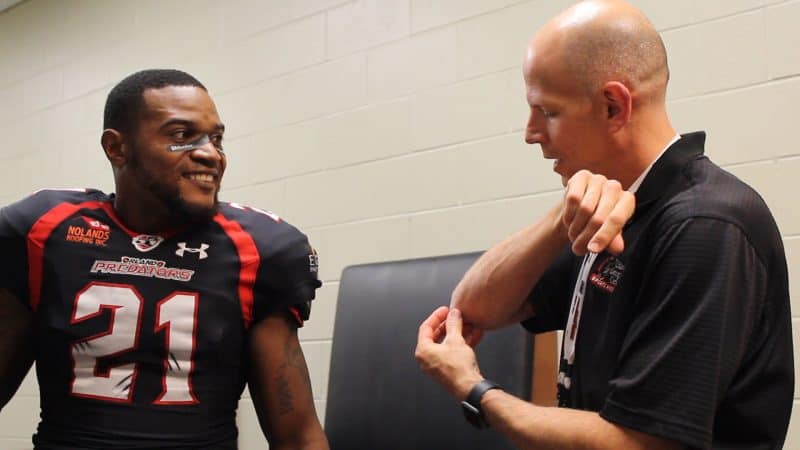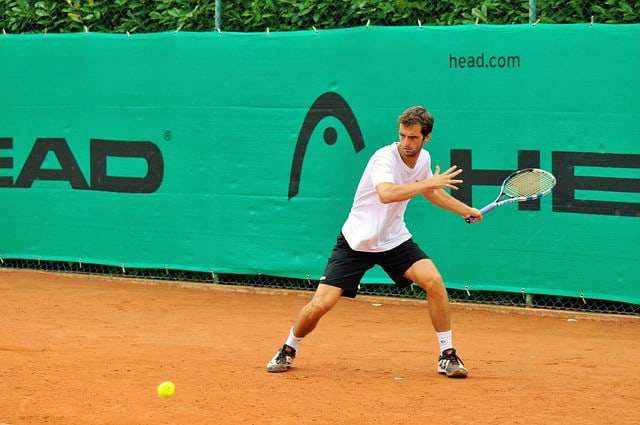What is Tennis Elbow?
Tennis elbow has become more widespread in the general population due to more active fitness lifestyles. In fact, in the United States, tennis elbow now impacts 1% to 3% of the total population.
“A lot of people ask me what tennis elbow is,” says Bryan L. Reuss, M.D., a double board-certified orthopaedic surgeon specializing in sports medicine at Orlando Orthopaedic Center. “Tennis elbow is the condition where there’s pain on the outside of the elbow – all the extensor tendons which help lift the hand and fingers, insert on the small bone called the lateral epicondyle.”
Tennis elbow occurs when the tendons that join the muscles of the forearm become inflamed from repetitive motion and overuse. This results in discomfort and sensitivity on the outer edge of the elbow.
What Causes Tennis Elbow?
Research has indicated that tennis elbow most often comes about due to an injury to a unique forearm muscle, the extensor carpi radialis brevis (ECRB). The ECRB secures the wrist when the arm is straight, like in a power grip. It’s the usual motion of a tennis groundstroke. As the ECRB erodes due to overuse, microtears appear along the tendon where it meets the lateral epicondyle, leading to pain and swelling. Long term wear and tear on the muscle from friction over bony protrusions around the elbow can lead to tearing.
Tennis elbow is not something that occurs solely to tennis players. Many tradespeople working in painting, plumbing, cooking and carpentry are at higher risk of developing the condition because of the repetitive motion involved with their activities. The majority of people who develop tennis elbow fall between 30 and 50-years-old.
Symptoms of Tennis Elbow

Dr. Reuss explaining tennis elbow to an athlete.
Tennis elbow doesn’t normally materialize as a result of a particular injury. Rather, symptoms evolve slowly over time, with the formation of granulation tissues and adhesions around the outer elbow. Mild pain will often be experienced at first, followed by greater tenderness and discomfort, and gradually deteriorate over weeks or months.
Common symptoms of tennis elbow include:
- Discomfort or burning on the outside of the elbow
- Swelling
- Decreased grip strength when holding tools or a racquet
Individuals may experience difficulty doing push-ups, lifting weights, or repetitive, high-intensity movements.
How is Tennis Elbow Treated?
 Roughly nine out of ten patients achieve successful outcomes via nonsurgical treatment.
Roughly nine out of ten patients achieve successful outcomes via nonsurgical treatment.
The first line of defense is rest followed by over-the-counter pain medication to alleviate pain and inflammation. The use of a brace around the back of the forearm can be effective in reducing pain and resting the strained muscles and tendons. Your sports medicine specialist may also recommend steroid injections to relieve inflammation.
“Tennis elbow’s fancy name is ‘lateral epicondylitis,’” says Dr. Reuss. “It’s a very painful condition that often requires anti-inflammatories, bracing, rest, and sometimes cortisone injections.”
If conservative treatment methods prove unsuccessful, your doctor may recommend surgery.
“Typically, in my practice, I’ll do one or two cortisone injections and if that’s successful with the therapy, then the patient is cured,” says Dr. Reuss. “But if not the patient has to undergo a surgery called an ‘open lateral release’, where we release the tension on those tendons and ligaments.”
Results From Tennis Elbow Surgery
The goal of surgery will be to take out any unhealthy muscle and reconnect vital tissue to the bone. It’s normally done as an outpatient procedure with most patients able to return home the same day.
“We leave the muscle intact so they do not lose strength permanently,” says Dr. Reuss. “It’s a four to six-week recovery to getting back to their normal activities and generally patients do very well with the surgery.”
Rehabilitation and physical therapy following surgery are an integral part of the healing process. Light stretching and flexibility exercises can normally be started about one week after surgery.


